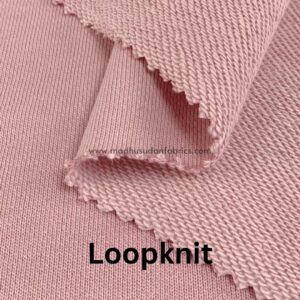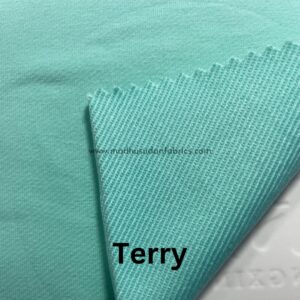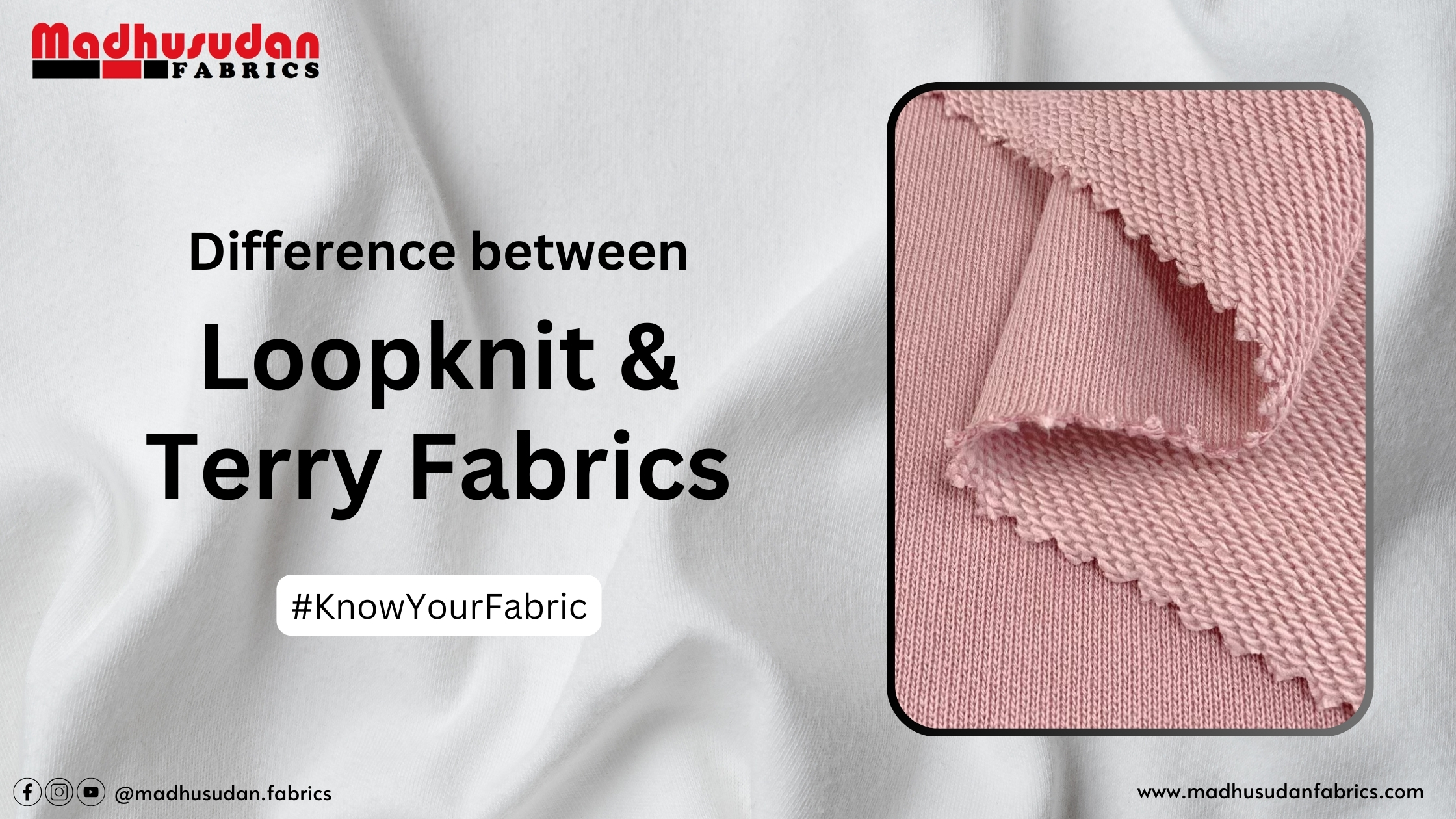Loopknit and terry fabrics are both knitted fabrics, but their distinct constructions lead to vastly different properties and applications.
Loopknit Fabrics:

- Construction: Formed by interconnecting loops of yarn, creating a flexible and often stretchy material.
- Characteristics:
- Known for their flexibility and drape.
- Can range from lightweight and sheer to heavier and more structured.
- Often used in garments like t-shirts, sweaters, and dresses.
Terry Fabrics:

- Construction: Characterized by a distinctive pile structure with uncut loops that create a soft and absorbent surface.
- Characteristics:
- Renowned for their plushness, softness, and high absorbency.
- Commonly used for towels, bathrobes, and other absorbent textiles.
- Can also be used in clothing applications like sweatshirts and sweatpants.
Key Differences:
- Construction: Loopknit fabrics have interconnected loops, while terry fabrics feature raised loops or pile.
- Texture: Loopknits generally have a smoother surface, while terry fabrics are known for their plushness.
- Absorbency: Terry fabrics are significantly more absorbent than loopknit fabrics.
- Applications: Loopknits are widely used in apparel, while terry fabrics are primarily used for absorbent textiles and some clothing items.
In essence, loopknit fabrics prioritize flexibility and drape, while terry fabrics excel in softness and absorbency. These distinct characteristics make them suitable for a wide range of applications in the textile industry.

